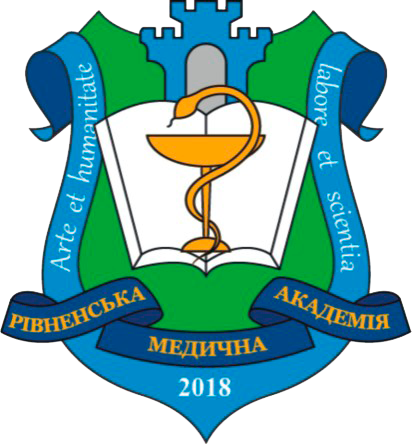RESEARCH ON THE CONTENT OF HYDROXYCINNAMIC ACIDS IN CENTAUREA DEALBATA L. AND BELLIS PERENNIS L.
DOI:
https://doi.org/10.32782/health-2025.1.8Keywords:
hydroxycinnamic acids, Centaurea dealbata L., Bellis perennis L., HPLC, spectrophotometric methodAbstract
Hydroxycinnamic acids have a wide range of therapeutic effects, useful in the treatment of cancer, diabetes, cardiovascular diseases, respiratory diseases and liver diseases. In recent decades, the demand for the use of biologically active substances of medicinal plants and herbal preparations based on them has increased significantly. Among these plants are representatives of the Asteraceae family, in particular English daisy and Persian cornflower. B. perennis L. is used in traditional medicine for the treatment of headaches, stomachaches, colds, eye diseases, eczema, skin boils, bruises, fractures, wounds, gastritis, diarrhea, bleeding, rheumatism, inflammatory and infectious diseases of the upper respiratory tract. Plants of the genus Cornflower are used in traditional medicine due to their tonic, expectorant, antipyretic, and antidiarrheal effects. The aim of the study was to determine the quantitative content and component composition of hydroxycinnamic acids in English daisy leaves and Persian cornflower flowers. The objects of the study were English daisy leaves and Persian cornflower flowers, harvested in the Ternopil region in 2024. The quantitative content of the sum of hydroxycinnamic acids in the studied objects in terms of chlorogenic acid was determined by spectrophotometric method. The qualitative composition and quantitative content of individual hydroxycinnamic acids in the studied objects were determined by HPLC on an Agilent Technologies 1200 chromatograph. Among the individual hydroxycinnamic acid compounds identified by us, in the largest amount was chlorogenic acid, the content of which in the leaves of English daisies was 17528.49 μg/g and 2837.24 μg/g in the flowers of Persian cornflower. In the leaves of English daisies, a significant content of quinic acid (1329.55 μg/g) should also be noted. We also determined the quantitative content of the sum of hydroxycinnamic acids in terms of chlorogenic acid by spectrophotometric method. The total quantitative content of the sum of hydroxycinnamic acids in the leaves of English daisies was 1.36 ± 0.02 %, and in the flowers of Persian cornflower – 0.64 ± 0.01 %.
References
Aktumsek A., Zengin G., Guler G. O., Cakmak Y. S., Duran A. Screening for in vitro antioxidant properties and fatty acid profiles of five Centaurea L. species from Turkey flora. Food Chem Toxicol. 2011. Vol. 49(11). P. 2914–20. DOI: 10.1016/j.fct.2011.08.016
Demiroz T., Nalbantsoy A., Kose F. A., Baykan S. Phytochemical composition and antioxidant, cytotoxic and anti- inflammatory properties of Psephellus goeksunensis (Aytaç & H. Duman) Greuter & Raab-Straube. South African Journal of Botany. 2020. Vol. 130. P. 1–7. https://doi.org/10.1016/j.sajb.2019.11.021
El-Seedi H. R. et al. Chapter 8 - Hydroxycinnamic Acids: Natural Sources, Biosynthesis, Possible Biological Activities, and Roles in Islamic Medicine. Studies in Natural Products Chemistry. 2018. Vol. 55. P. 269–292. https://doi.org/10.1016/B978-0-444-64068-0.00008-5
Ghasemzadeh A., Ghasemzadeh N. Flavonoids and Phenolic Acids: Role and Biochemical Activity in Plants and Humans. Journal of Medicinal Plants Research. 2011. Vol. 5. P. 6697–6703. DOI: 10.5897/JMPR11.1404
Hayta S., Bagci E. Composition of the Essential Oil of Endemic Psephellus pyrrhoblephara Boiss. (Asteraceae) From Turkey. Journal of Essential Oil Bearing Plants. Vol. 18 (3). 2015. P. 627–632. DOI:10.1080/0972060X.2014.977578
Justesen U., Knuthsen P., Leth T. Determination of plant polyphenols in Danish foodstuffs by HPLC-UV and LC-MS detection. Cancer Letters. 1997. Vol. 114(1-2). P. 165–167. https://doi.org/10.1016/S0304-3835(97)04651-X
Karakas F. P. et al. Isolation of an oleanane-type saponin active from Bellis perennis through antitumor bioassay- guided procedures. Pharmaceutical Biology. 2013. Vol. 52(8). P. 951–955. DOI: 10.3109/13880209.2013.874461
Karić E., Horozić E., Pilipović S., Dautović E., Ibisević M., Dzambić A., Celiković S., Halilcević A. Tyrosinase inhibition, antioxidant and antibacterial activity of commercial daisy extract (Bellis perennis). J. Pharm. Res. Int. 2023. 35. P. 13–19. DOI: 10.9734/jpri/2023/v35i57325
Marques T. H. C., de Melo C. H. S., de Freitas R. M. In vitro evaluation of antioxidant, anxiolytic and antidepressant-like effects of the Bellis perennis extract. Braz. J. Pharmacogn. 2012. 22. P. 1044–1052. DOI:10.1590/S0102-695X2012005000082
Mishio T., Takeda K., Iwashina T. Anthocyanins and Other Flavonoids as Flower Pigments from Eleven Centaurea Species. Natural Product Communications. 2015. Vol.10(3). P. 447–50. DOI:10.1177/1934578X1501000318
Naveedab M., Hejazic V., Asghar M. A., et al. Chlorogenic acid (CGA): A pharmacological F. review and call for further research. Biomedicine & Pharmacotherapy. 2018. Vol. 97. P. 67–74. https://doi.org/10.1016/j.biopha.2017.10.064
Ninomiya K., Motai C., Nishida E., Kitagawa N., Yoshihara K., Hayakawa T., Muraoka O., Li X., Nakamura S., Yoshikawa M. et al. Acylated oleanane-type triterpene saponins from the flowers of Bellis perennis show anti-proliferative activities against human digestive tract carcinoma cell lines. J. Nat. Med. 2016. 70. P. 435–451. DOI: 10.1007/ s11418-016-0998-9
Santana-Galvez J., Cisneros-Zevallos L., Jacobo-Velazquez D. A. Chlorogenic acid: recent advances on its dual role as a food additive and a nutraceutical against metabolic syndrome. Molecules. 2017. Vol. 26(22). P. 358. https://doi. org/10.3390/molecules22030358
Siatka T., Kasparova M. Seasonal Variation in Total Phenolic and Flavonoid Contents and DPPH Scavenging Activity of Bellis Perennis L. Flowers. Molecules. 2010.Vol. 15. P. 9450–9461. DOI: 10.3390/molecules15129450
Sumere B. R. et al. Combining pressurized liquids with ultrasound to improve the extraction of phenolic compounds from pomegranate peel (Punica granatum L.). Ultrasonics sonochemistry. 2018. Т. 48. P. 151–162. https://doi.org/10.1016/j. ultsonch.2018.05.028
Wagenitz G., Hellwig F. H. The genus Psephellus cass. (Compositae, Сardueae) revisited with a broadened concept. Willdenowia. 2000. Vol. 30. P. 29–44. DOI:10.3372/wi.30.30102
Дахим І. С., Марчишин С. М. Хімічний склад трави стокроток багаторічних (Bellis perennis L.). Здобутки клініч- ної та експериментальної медицини. 2014. № 1 (20). С. 35–38. DOI: https://doi.org/10.11603/1811-2471.2014.v20.i1.4263
Державна Фармакопея України: у 3 т. / ДП «Укр. наук. фармакоп. центр якості лік. засобів». 2-ге вид. Харків : Укр. наук. фармакоп. центр якості лік. засобів, 2014. Т. 3. 732 с.
Марчишин С. М. Дослідження кислот гідроксикоричних трави чистецю Зібольда. С. М. Марчишин, Л. В. Гусак, Т. С. Бердей. Мед. та клін. хім. 2016. № 3. С. 13–16. DOI 10.11603/mcch.2410-681X.2016.v0.i3.6935
Солодовниченко Н. М. Журавльов М. С., Ковальов В. М. Лікарська рослинна сировина та фітопрепарати : посіб. з фармакогнозії з основами біохімії лікарських рослин. Харків : Вид-во НФАУ : Золоті сторінки, 2001. 408 с.





